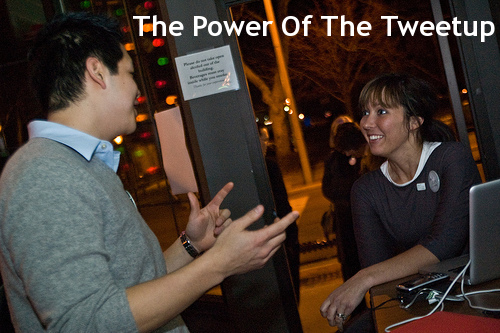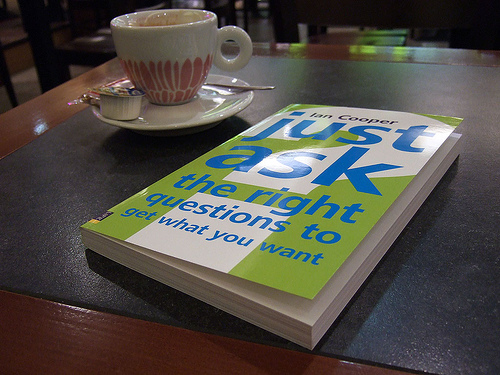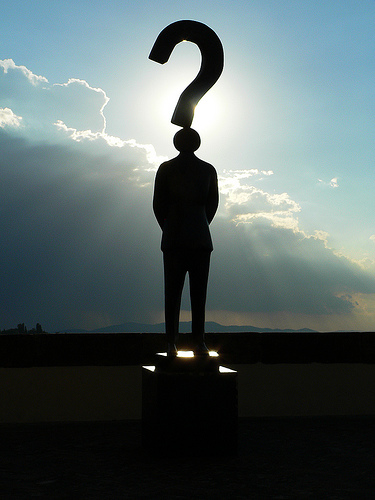 Setting goals for your travel blog is an essential way to expand your readership, keep motivated to write, and stay on track with your objectives. The problem is that many travel bloggers have, especially when first starting out, is setting too many goals that are too vague.
Setting goals for your travel blog is an essential way to expand your readership, keep motivated to write, and stay on track with your objectives. The problem is that many travel bloggers have, especially when first starting out, is setting too many goals that are too vague.
In the new year you can get ahead of the game easily by cutting up your goals into a small set of defined categories, keeping them short-term, and being as specific as possible.
Goals With Deadlines
Often when you’re travel blogging you set goals well in advance or without any context in time. Some examples or goals that don’t have good time limits (or any at all are):
- I want to increase my RSS subscribers.
- I hope to make some money with my travel blog.
- I’d like to submit one Ezine, Hubpage, Squidoo article per week.
These are all worthy things to work towards but without wrapping them up and tying a deadline at the end of them you’ll find it hard to stick to and monitor how things are going. Here are the same goals but with some reasonable deadlines.
- I want to increase my RSS subscribers by 15 within 1 month.
- I hope to make $35 per month with my travel blog by July.
- I’m going to submit one Ezine article per week until I’ve completed 25 of them (i.e. 25 weeks).
3 months is a good amount of time, I’ve found, to set goals and see results from your efforts in terms of monetizing, increasing readership, or adding features to your blog. It’s long enough to make a difference but not so far in advance that you’ll start to slack off (too much) as the clock winds down.
Be Very Specific
 You can take this lesson to the extreme. I set very specific goals for my travel blogs and it’s when I started doing so that they really began to take off. Most of the goals aren’t too glamorous although they are well defined. Get down to numbers (i.e. adding 30 new Twitter followers within 3 weeks) and then run them by a friend or blogging buddy. I run my quarterly blogging goals by my wife and a few travel blogging friends who keep me down to Earth or tell me when I’m being too conservative in my estimates.
You can take this lesson to the extreme. I set very specific goals for my travel blogs and it’s when I started doing so that they really began to take off. Most of the goals aren’t too glamorous although they are well defined. Get down to numbers (i.e. adding 30 new Twitter followers within 3 weeks) and then run them by a friend or blogging buddy. I run my quarterly blogging goals by my wife and a few travel blogging friends who keep me down to Earth or tell me when I’m being too conservative in my estimates.
Use Categories, See The Connections
It’s difficult to make money from a primary travel blog if you don’t have many readers, a poorly designed website, or haven’t been getting links for your travel blog. You need to see the relationships between your goals and your methods to make sure you’re setting balanced ones. The most important goal I always set, and has lead to everything else, is simple – I always try and write useful, informative, and interesting posts and produce the best content I can.
I’ve written a few posts on how I try and do that you may find useful.
- 6 Ways To Keep Your Personal Travel Blog Interesting
- The Basics Of Building A Successful Travel Blog Part 1
- The Basics Of Building A Successful Travel Blog Part 2
In the end people need a reason to read your blog (if you want more readers) and reason to pay you (if you want to make money from your travel blog) or a reason to link to you (if you’re looking to increase your Page Rank). Determine what those reasons are – or the reason anyone should help you reach your set goals and you’ll be one step closer to achieving them.
[photos by: Swiv, mikeyexists]
 Yesterday on foXnoMad I took a look back on 2009 with other
Yesterday on foXnoMad I took a look back on 2009 with other  My Personal Travel Blogging Goals For 2010
My Personal Travel Blogging Goals For 2010 I won’t be posting today since it’s a major holiday in the US and many other parts of the world. So, I’d like to open up the comments to all of you and hear what you’re plans are for the upcoming year.
I won’t be posting today since it’s a major holiday in the US and many other parts of the world. So, I’d like to open up the comments to all of you and hear what you’re plans are for the upcoming year.
 Sometimes we forget that all of those little icons we speak to everyday actually have real people behind them. A tweetup is when you use Twitter to meet a few other people on Twitter at a common location. Whether you’re traveling actively or have a home base, you can see if anyone is available for some coffee (or a beer) from time to time. You don’t need thousands of followers either to do it either. Make connections with the people who do follow you and never take the human element out of Twitter or anything else you do online. You can also search for other tweet ups that might be happening nearby or where you might be traveling.
Sometimes we forget that all of those little icons we speak to everyday actually have real people behind them. A tweetup is when you use Twitter to meet a few other people on Twitter at a common location. Whether you’re traveling actively or have a home base, you can see if anyone is available for some coffee (or a beer) from time to time. You don’t need thousands of followers either to do it either. Make connections with the people who do follow you and never take the human element out of Twitter or anything else you do online. You can also search for other tweet ups that might be happening nearby or where you might be traveling. I’m a pretty introverted person and a bit shy in unfamiliar surroundings myself, but chances are that so are some of the other travelers you’ll be meeting. Travelers are typically a friendly group and they usually have plenty of interesting stories to tell you about. Tweetups in active places help too so there is enough going on around you to take off the edge or pressure. After the first few minutes though the anxiety will fade and you’ll be having fun.
I’m a pretty introverted person and a bit shy in unfamiliar surroundings myself, but chances are that so are some of the other travelers you’ll be meeting. Travelers are typically a friendly group and they usually have plenty of interesting stories to tell you about. Tweetups in active places help too so there is enough going on around you to take off the edge or pressure. After the first few minutes though the anxiety will fade and you’ll be having fun. Keep tabs on where people are tweeting from and if they may be headed your way. The tweeters who seem interesting or you’ve gotten to know online might be in town soon so ask if they’d like to meet up for a bit while they’re passing through. Don’t be shy and hop on in. Look for hash tags of the tweet up (i.e. #dcthh) and follow the conversation. Once you’re at a tweetup more are sure to follow and you can plan them on the spot.
Keep tabs on where people are tweeting from and if they may be headed your way. The tweeters who seem interesting or you’ve gotten to know online might be in town soon so ask if they’d like to meet up for a bit while they’re passing through. Don’t be shy and hop on in. Look for hash tags of the tweet up (i.e. #dcthh) and follow the conversation. Once you’re at a tweetup more are sure to follow and you can plan them on the spot. No matter how efficient you are or great your writing is, maintaining a regular travel blog is very time consuming. Whether you travel full time or have a day job you will continually be balancing the time you spend on your blog and everyone else. Your spouse, significant others, and friends may have difficulty understanding the rigors of blogging, networking, and managing a travel blog.
No matter how efficient you are or great your writing is, maintaining a regular travel blog is very time consuming. Whether you travel full time or have a day job you will continually be balancing the time you spend on your blog and everyone else. Your spouse, significant others, and friends may have difficulty understanding the rigors of blogging, networking, and managing a travel blog.
 Making money with your travel blog is easy – how much you make is a different story. I’ve previously covered
Making money with your travel blog is easy – how much you make is a different story. I’ve previously covered  Chitika
Chitika Traveling and blogging are often in conflict with one another and it can be stressful for you as a travel blogger to maintain your writing when you’re active on the road. It’s important, especially if you want to establish and expand your travel blog, to
Traveling and blogging are often in conflict with one another and it can be stressful for you as a travel blogger to maintain your writing when you’re active on the road. It’s important, especially if you want to establish and expand your travel blog, to  Use The Right Holidays
Use The Right Holidays Look At Your Last Few Posts
Look At Your Last Few Posts Many new travel bloggers are often discouraged by the lack of comments and discussions on their posts. Yet there are a few ways ways you can foster discussions immediately on your travel blog and encourage reluctant readers to leave a comment from time to time.
Many new travel bloggers are often discouraged by the lack of comments and discussions on their posts. Yet there are a few ways ways you can foster discussions immediately on your travel blog and encourage reluctant readers to leave a comment from time to time.
 Use The Subscribe To Comments Plugin
Use The Subscribe To Comments Plugin Destinations vs. General Travel Topics
Destinations vs. General Travel Topics Matt Kepnes (
Matt Kepnes ( Often travelers become at odds with their travel blog. Either you’re traveling and too busy to write or sometimes not traveling enough and get short on ideas. Twitter and the concept of tweets are a good way to energize your travel blog when you’re short on time or inspiration.
Often travelers become at odds with their travel blog. Either you’re traveling and too busy to write or sometimes not traveling enough and get short on ideas. Twitter and the concept of tweets are a good way to energize your travel blog when you’re short on time or inspiration.